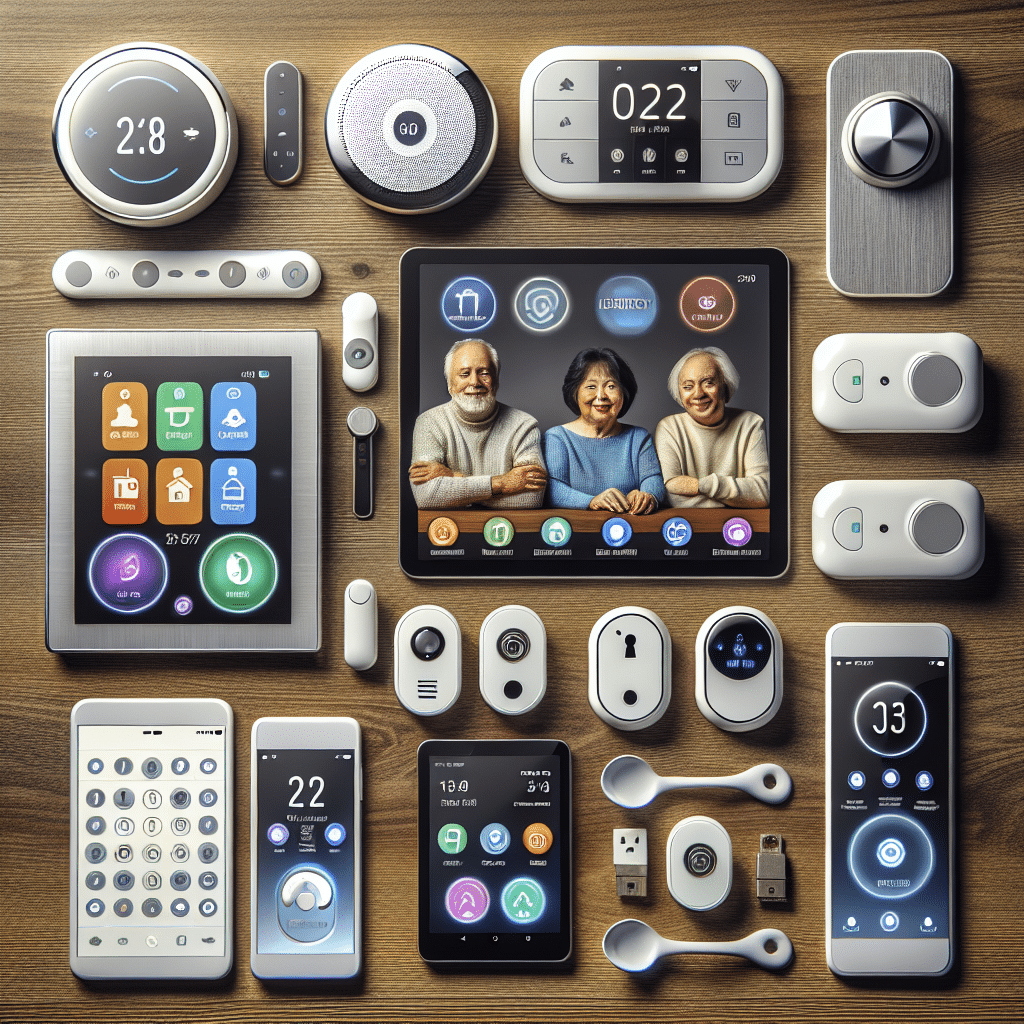The Rise of Smart Home Devices for Seniors
As the population ages, the demand for technologies that enhance the quality of life for seniors has surged. Smart home devices have emerged as invaluable tools that cater specifically to the needs of older adults, offering solutions that promote safety, convenience, and independence in daily life.
1. Voice-Activated Assistants
Voice-activated assistants such as Amazon Alexa, Google Assistant, and Apple’s Siri play a pivotal role in creating a user-friendly smart home environment for seniors. These devices allow users to control lights, thermostats, and other smart appliances using simple voice commands. This hands-free operation is especially beneficial for seniors who may struggle with physical limitations or dexterity issues.
Key Features:
- Voice Recognition: Advanced voice recognition technology can differentiate between speakers, allowing family members to communicate with the device in a personalized manner.
- Routines: Seniors can set morning and evening routines, ensuring that lights turn on and off automatically, and medication reminders are voiced at specific times.
2. Smart Lighting Solutions
Smart lighting systems, such as Philips Hue and LIFX, are designed for both safety and ambiance. With the ability to control brightness and color through an app or voice command, these devices significantly improve the quality of life for seniors at home.
Benefits:
- Motion Sensors: Motion-activated lights can illuminate pathways during the night, minimizing the risk of falls and enhancing safety in dimly lit areas.
- Automated Scheduling: Users can program lights to turn on or off at certain times, which can be especially useful for those with memory issues.
3. Smart Thermostats
Smart thermostats like the Nest Learning Thermostat make managing home temperature effortless. They adapt to users’ routines and provide remote control via smartphone apps.
Advantages:
- Energy Efficiency: These devices help seniors save on energy bills by learning their schedule and adjusting temperatures accordingly.
- Remote Monitoring: Family members can monitor temperature settings to ensure comfort and safety, offering peace of mind.
4. Smart Security Systems
Home security is a top priority for seniors living independently. Smart security systems, like Ring and Arlo, offer peace of mind with features designed specifically for ease of use.
Features:
- Video Doorbells: Seniors can see who is at the door through their smartphone or a smart display without needing to get up.
- Smart Locks: Keyless entry systems allow for easy access and can be controlled via an app, eliminating the need to fiddle with traditional keys.
5. Health and Safety Monitoring Devices
Health monitoring devices contribute significantly to supporting seniors’ independence. Wearable technologies, medical alert systems, and smart home sensors can help detect emergencies and enhance overall wellbeing.
Examples:
- Wearable Devices: Products like Fitbit or Apple Watch track health metrics, including heart rate and physical activity, encouraging seniors to maintain a healthy lifestyle.
- Smart Pill Dispensers: Automated dispensers can remind seniors when it’s time to take their medications and dispense the correct dosages, minimizing the risk of medication errors.
6. Home Automation Hubs
Home automation hubs like SmartThings or Apple HomeKit serve as control centers for multiple smart devices, creating a cohesive smart home ecosystem. This centralization simplifies interactions with technology, making it more accessible for seniors.
Benefits:
- User-Friendly Interfaces: These hubs offer intuitive apps that can be tailored to simplify navigation, ideal for seniors who may not be tech-savvy.
- Integration: Seniors can manage various devices—lights, security systems, thermostats—through one platform, reducing complexity.
7. Smart Safety Devices
With fall detection and emergency response capabilities, smart safety devices are invaluable to seniors. Products like Life Alert and MobileHelp provide immediate access to help in emergencies.
Functionalities:
- Fall Detection Sensors: Wearable devices can automatically detect a fall and alert emergency contacts or services without requiring the wearer to press a button.
- Environmental Sensors: Devices that monitor for smoke, carbon monoxide, and water leaks can alert seniors to potential dangers in their home environments.
8. Smart Entertainment Systems
Entertainment systems tailored for seniors, such as smart TVs and audio devices, offer both engagement and ease of use. Devices like Roku and Amazon Fire TV allow seniors to stream their favorite shows or listen to music without complicated remote controls.
Features:
- Voice Control: Access content through voice commands, enabling seniors to watch shows or select music without dealing with multiple buttons.
- User Profiles: Streaming services allow seniors to create profiles that adjust content based on their preferences, making the experience personal and enjoyable.
9. Smart Kitchen Appliances
In the kitchen, smart appliances can assist seniors in meal preparation and cooking, promoting independence and safety.
Examples:
- Smart Ovens: Ovens with voice control and preset cooking functions allow seniors to prepare meals without the hassle of adjusting complex settings.
- Connected Refrigerators: Smart fridges can help track grocery supplies, suggest recipes based on available ingredients, and even order groceries online.
10. Community and Family Connectivity
Smart home technology facilitates connection with family and friends, which is vital for the emotional wellbeing of seniors.
Technologies:
- Video Calling Devices: Devices like Facebook Portal and Google Nest Hub Max enable seniors to video chat with loved ones easily, helping reduce feelings of isolation.
- Social Communication Apps: Simplified interfaces on tablets or smart displays can help seniors connect with family and friends through messaging or social media platforms.
11. Remote Caregiving Options
Family members can monitor and assist seniors from a distance with innovative technology solutions.
Tools:
- Family-Controlled Dashboards: These allow family members to check on various aspects of the senior’s smart home environment, from security camera feeds to environmental controls.
- Health Tracking Apps: These can send real-time health data or alerts directly to family or caregivers, enabling proactive support.
12. Conclusion: Empowering Seniors Through Technology
Smart home devices are transforming how seniors live independently, enhancing their safety, comfort, and connectivity. By integrating these technologies into their homes, seniors can enjoy greater autonomy while ensuring that help is always at hand when needed.
